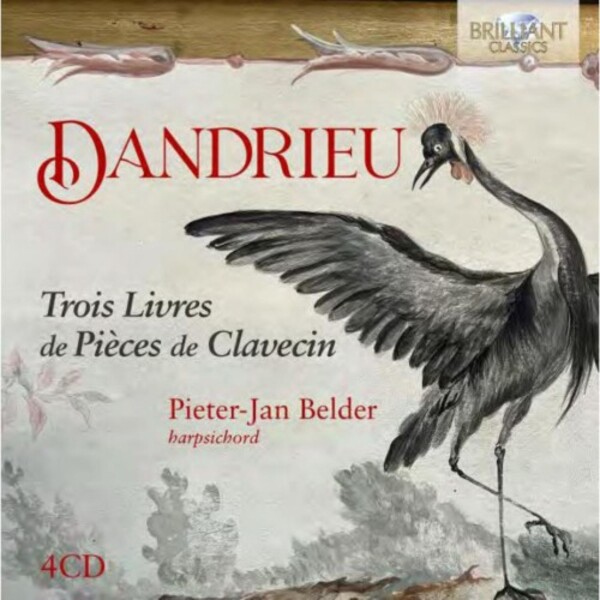
Dandrieu - Trois Livres de Pieces de Clavecin
£15.15
In stock - available for despatch within 1 working day
Despatch Information
This despatch estimate is based on information from both our own stock and the UK supplier's stock.
If ordering multiple items, we will aim to send everything together so the longest despatch estimate will apply to the complete order.
If you would rather receive certain items more quickly, please place them on a separate order.
If any unexpected delays occur, we will keep you informed of progress via email and not allow other items on the order to be held up.
If you would prefer to receive everything together regardless of any delay, please let us know via email.
Pre-orders will be despatched as close as possible to the release date.
Label: Brilliant Classics
Cat No: 96125
Format: CD
Number of Discs: 4
Genre: Instrumental
Release Date: 26th May 2023
Contents
Artists
Pieter-Jan Belder (harpsichord)Works
Pieces de Clavecin Book 1Pieces de Clavecin Book 2
Pieces de Clavecin Book 3
Artists
Pieter-Jan Belder (harpsichord)About
The musical environment in which Dandrieu was raised was a period of considerable change. Paris saw the rise of a modish cultural élite with an increasing desire for new music, whether instrumental or vocal, and this was fed by several publications such as Mercure Galant (1678–1714), which reported not only on concerts and new music but also provided a modicum of artistic gossip to inform its readers which artists were currently in vogue. It has been mentioned that Dandrieu was renowned from an early age as a prodigy. While we know little else about his activities as a performer, the decision to publish his early compositions must have been based on the level of notoriety he had achieved. According to the catalogue of the Bibliothèque nationale de France, the first book of harpsichord pieces was published in 1705, but there are no records of his legally required lettres de privilège being submitted to the Paris Guild of Booksellers for that year. Indeed, though records for November 1700–January 1704 are now lost, it is assumed the books were issued at some point between these dates, which would make him the youngest-known composer to have released a book of music. While Dandrieu’s early harpsichord pieces were written in the shadow of 17th-century composers, the three books published between 1724 and 1735 demonstrate a radically new direction for the composer. Such a shift can be attributed to changing tastes: harpsichord music as early as the last decade of the previous century shows a gradual distancing from many techniques that were primarily associated with the lute. Dandrieu, like most musicians, probably spent much of his earlier life as a teacher and would have been well aware of the abilities and tastes of those for whom the suites were written. They retain a naïve simplicity that is often lacking elsewhere. Nothing is too complicated: ornamentation is straightforward, textures tend towards two-part writing, and figuration always falls comfortably under the hand. The Premier livre finishes with what Dandrieu refers to as ‘a suite in its own right’ of ten tableaux: Les Charactères de la Guerre. It demonstrates Dandrieu’s propensity to revise earlier and possibly popular works to suit new media. The tableaux follow a tradition among composers for depicting battle scenes. The tradition continued in France until late into the 18th century with Claude-Bénigne Balbastre’s 1792 appeal to the revolutionaries in Marche des Marseillois.
Error on this page? Let us know here
Need more information on this product? Click here